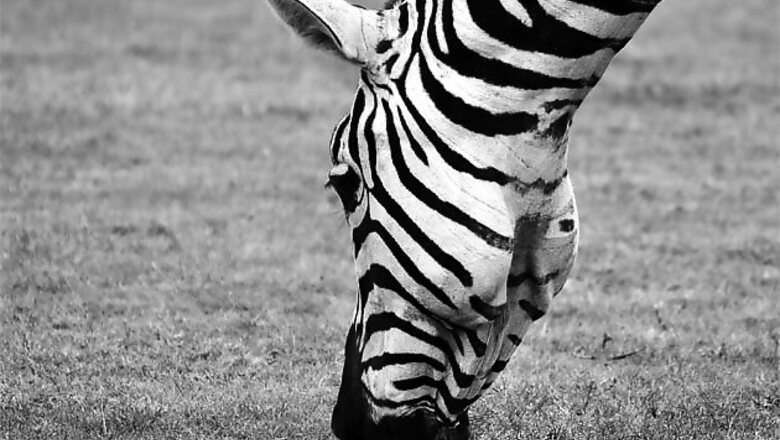
views
Zebras evolved black-and-white stripes to confuse predators by creating an optical illusion when the animals move, scientists say. The functional significance of the zebra coat stripe pattern is one of the oldest questions in evolutionary biology, having troubled scientists ever since Charles Darwin and Alfred Russel Wallace first disagreed on the subject.
While different theories have been put forward to address this question, the idea that the stripes act to confuse or 'dazzle' observers remains one of the most plausible. Researchers from Hungary and Sweden investigated how motion of the zebra's high contrast stripes creates visual effects that may act as a form of motion camouflage.
They found that the observer's visual system is flooded with erroneous motion signals that cause visual illusions. These illusory effects act together to confuse biting insects approaching from the air, or possibly mammalian predators during the hunt, particularly when two or more zebras are observed moving together as a herd.
In the study, researchers demonstrate that a zebra-striped horse model attracts far fewer horseflies (tabanids) than either homogeneous black, brown, grey or white equivalents. "We show that the attractiveness of striped patterns to tabanids is also reduced if only polarisation modulations - parallel stripes with alternating orthogonal directions of polarisation - occur in horizontal or vertical homogeneous grey surfaces," researchers said in the Journal of Experimental Biology.
Tabanids have been shown to respond strongly to linearly polarised light, and the study demonstrated that the light and dark stripes of a zebra's coat reflect very different polarisations of light in a way that disrupts the attractiveness to tabanids. Researchers found that the attractiveness to tabanids decreases with decreasing stripe width, and that stripes below a certain size are effective in not attracting tabanids.
Moreover, they found that the stripe widths of zebra coats fall in a range where the striped pattern is most disruptive to tabanids. "This work provides an experimentally supported explanation for the underlying mechanism leading to the selective advantage of a black-and-white striped coat pattern," the study concluded.














Comments
0 comment